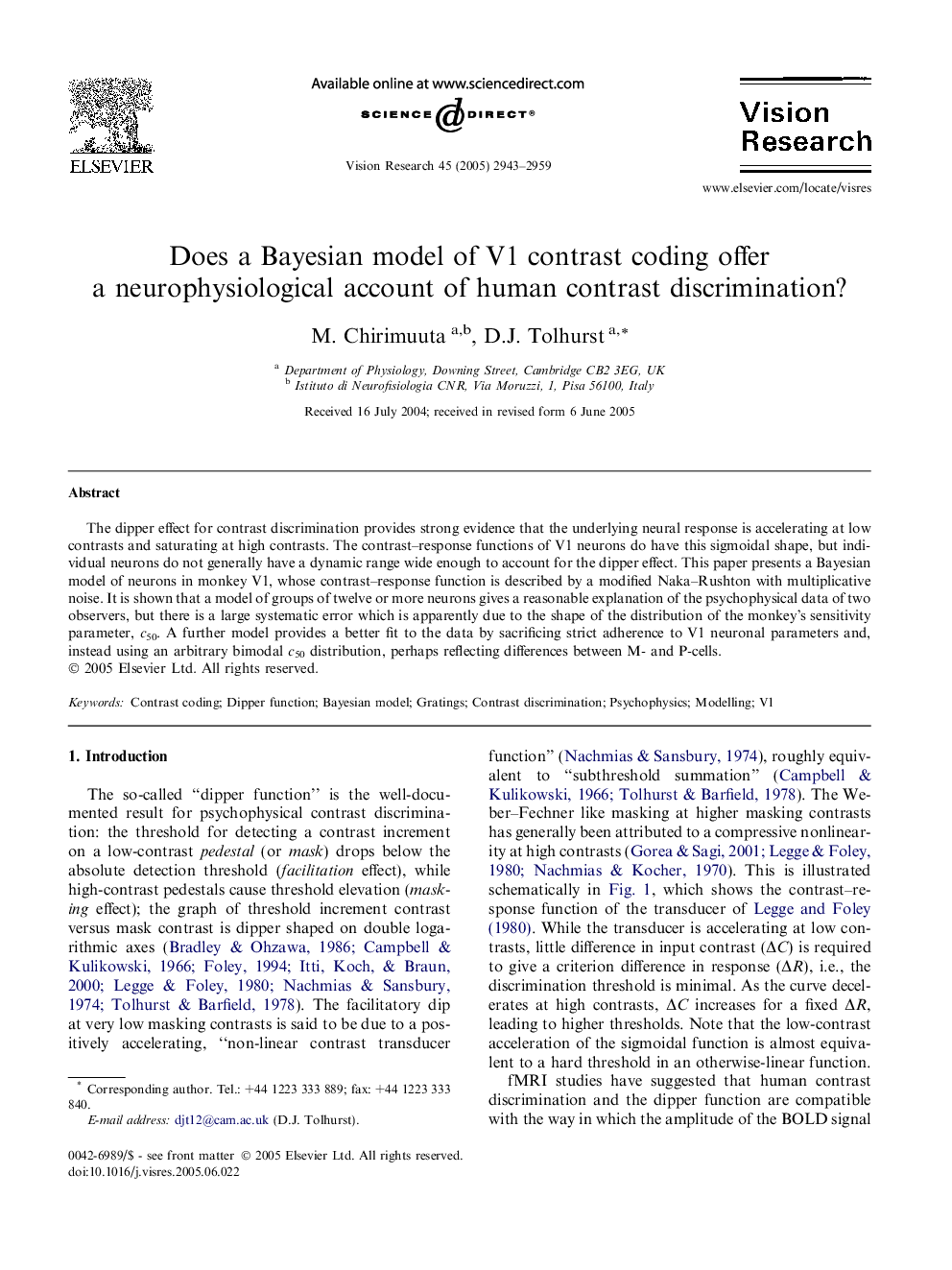| Article ID | Journal | Published Year | Pages | File Type |
|---|---|---|---|---|
| 4035529 | Vision Research | 2005 | 17 Pages |
The dipper effect for contrast discrimination provides strong evidence that the underlying neural response is accelerating at low contrasts and saturating at high contrasts. The contrast–response functions of V1 neurons do have this sigmoidal shape, but individual neurons do not generally have a dynamic range wide enough to account for the dipper effect. This paper presents a Bayesian model of neurons in monkey V1, whose contrast–response function is described by a modified Naka–Rushton with multiplicative noise. It is shown that a model of groups of twelve or more neurons gives a reasonable explanation of the psychophysical data of two observers, but there is a large systematic error which is apparently due to the shape of the distribution of the monkey’s sensitivity parameter, c50. A further model provides a better fit to the data by sacrificing strict adherence to V1 neuronal parameters and, instead using an arbitrary bimodal c50 distribution, perhaps reflecting differences between M- and P-cells.
